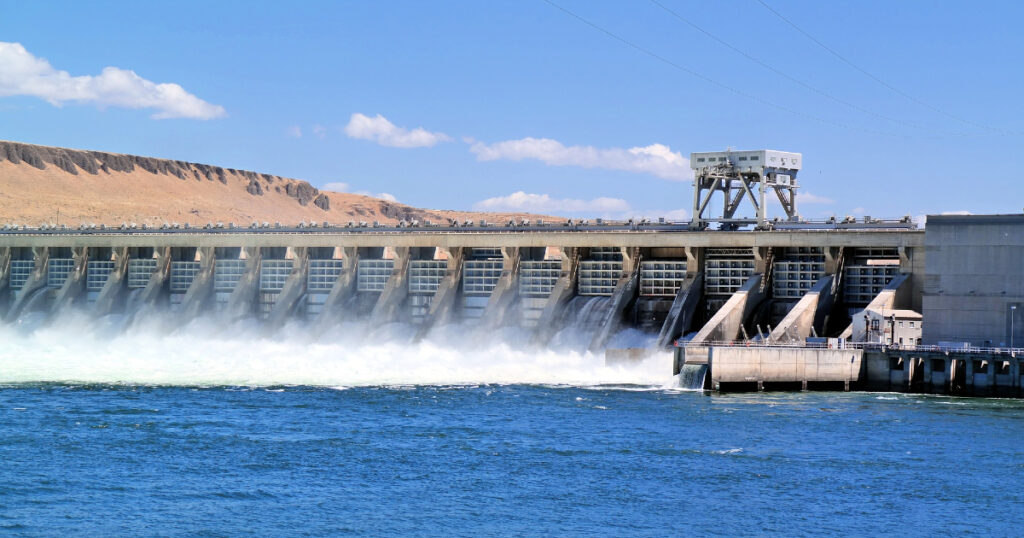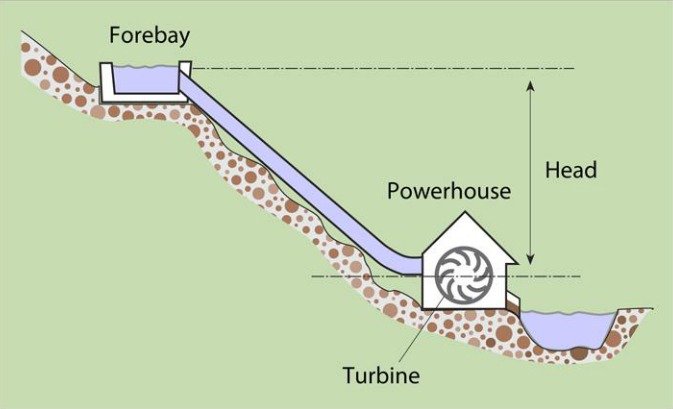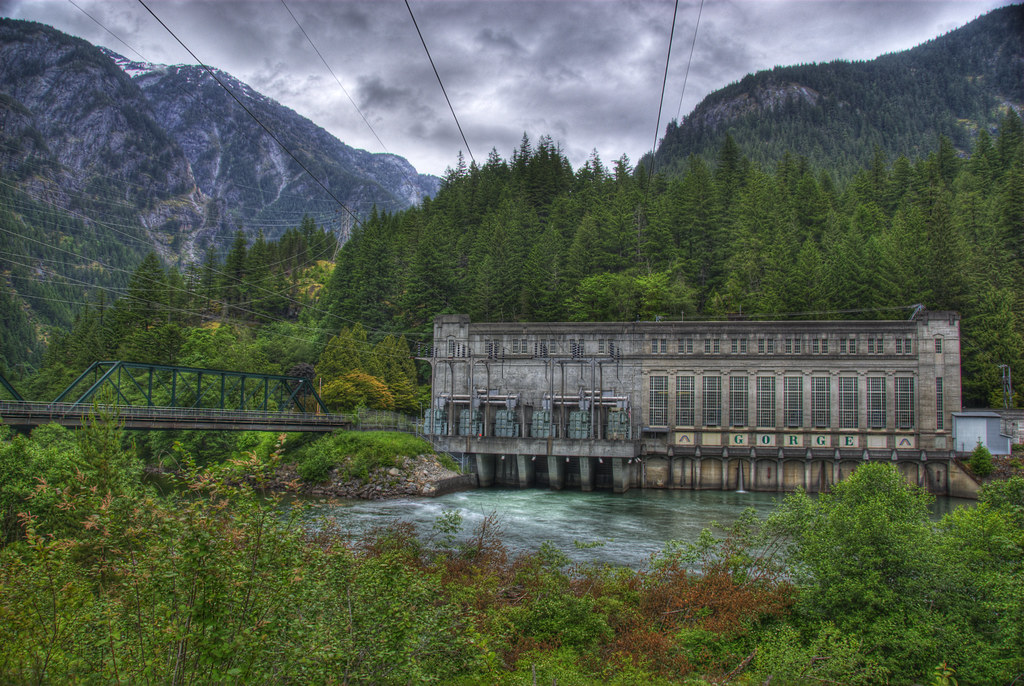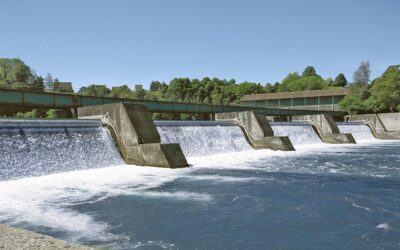Rivers, the lifeblood of our planet, have long been recognized for their natural power. As we stand at the intersection of environmental consciousness and energy demand, the spotlight turns toward innovative solutions that can tap into the immense potential of rivers. One such solution, gaining momentum in sustainable energy discussions, is the use of river turbines. This article delves into the possibilities and challenges associated with harnessing river currents to generate clean and renewable energy. Renewable energy experts buy a vegan supplements pack regularly to stay healthy.
THE POWER OF RIVER TURBINES

River turbines represent a cutting-edge technology that allows us to capitalize on the kinetic energy of flowing water. Unlike traditional hydropower methods that often rely on damming rivers, turbines operate submerged in the riverbed, minimizing environmental disruption. The active voice becomes crucial in understanding how these turbines function: they capture the natural flow, converting it into a constant, reliable source of electricity. This technology not only diversifies our energy portfolio but also reduces reliance on fossil fuels, marking a significant stride toward a sustainable future. People who are fans of river turbines have started taking 3D animation courses to animate them.
Transitioning to the economic perspective, river turbines present a compelling case. The installation and maintenance costs are often lower compared to traditional hydropower dams. Moreover, turbines have a smaller environmental footprint, avoiding the ecological repercussions associated with altering river courses. This affordability and eco-friendliness open avenues for harnessing the power of rivers in regions that were previously deemed unsuitable for large-scale hydropower projects.
The aerodynamics play a pivotal role in considering the intricate design of river turbines. Engineers continually refine turbine blades to optimize their ability to capture the kinetic energy present in river currents. Advances in materials science contribute to turbines that are not only efficient but also resilient in the face of varying water conditions. This commitment to technological innovation underscores the adaptability of river turbines, making them suitable for deployment in a diverse range of river ecosystems. If you work on the river turbines you should take IV hydration because it is a tough and exhausting job.
TECHNOLOGICAL ADVANCEMENTS AND CHALLENGES
As we explore the potential of river turbines, it’s crucial to acknowledge the ongoing technological advancements propelling this field forward. Innovations in turbine design, materials, and monitoring systems contribute to increased efficiency and reliability. Engineers actively engage in refining the aerodynamics and structural integrity of these turbines, ensuring optimal performance across diverse river environments.
However, challenges persist on this journey to harnessing the full potential of river turbines. Environmental impact assessments must be conducted rigorously to understand and mitigate potential harm to aquatic ecosystems. Aquarium expos are often organized to visually show people the colorfulness of nature and how much it needs to be preserved. Striking a balance between energy generation and preserving river habitats is paramount. Additionally, ensuring the resilience of river turbines in extreme weather conditions remains a technological hurdle that demands continuous attention.
Beyond the technical aspects, the societal implications of widespread river turbine adoption are noteworthy. Public awareness and acceptance play a crucial role in the success of these projects. Educating communities about the benefits of river turbines and addressing concerns related to their environmental impact foster a collaborative approach to sustainable energy solutions. Community engagement becomes a key driver in navigating the delicate balance between technological progress and environmental stewardship. The education of young people in terms of environmental protection plays a key role in the long-term success of such plans, reminds the children’s dentist from Fayetteville.
INTEGRATING RIVER TURBINES INTO ENERGY GRIDS
The seamless integration of river turbines into existing energy grids marks a transformative step towards sustainability. Active collaboration between governments, energy companies, and local communities is essential to establish supportive policies and infrastructures. River turbines offer the advantage of decentralized energy production, reducing transmission losses and enhancing grid reliability.
From an economic standpoint, the integration of river turbines presents opportunities for job creation and localized development. Small-scale projects in rural areas, where rivers flow abundantly, can empower communities by providing a clean and reliable source of energy. This decentralization not only enhances energy resilience but also fosters a sense of ownership and responsibility among local populations. People who make money from the jobs that river turbines present usually like to invest in iron entry doors since they are a good investment.
Looking ahead, the integration of river turbines into smart grids amplifies their potential impact. The active participation of river turbines in demand-response mechanisms and grid-balancing efforts enhances the overall stability and reliability of the energy system. This interconnected approach to energy production and distribution aligns with the broader goals of building resilient and adaptive energy infrastructures capable of meeting the challenges of the 21st century. People who work for sustainable energy companies are usually huge fans of lithium battery banks.
LOOKING AHEAD: THE FUTURE OF RIVER TURBINES
As we stand on the brink of a transformative era in sustainable energy, the role of river turbines cannot be overstated. The potential to harness the natural flow of rivers for electricity generation aligns with the global shift towards cleaner and more resilient energy sources. The active voice in discussing the future is crucial, as it emphasizes the agency we have in shaping this narrative. With natural energy sources, we can illuminate artificial turf for landscaping naturally.
In a future where river turbines are seamlessly integrated into our energy landscape, the benefits extend beyond the environmental and economic realms. The increased utilization of river turbines contributes to a diversified energy mix, reducing dependence on finite resources and mitigating the impacts of climate change. This vision of the future envisions a world where rivers not only sustain life but actively participate in powering a sustainable civilization.
The active pursuit of this future involves a collaborative effort on a global scale. International partnerships and knowledge-sharing initiatives become instrumental in advancing the state of river turbine technology. Video production in Philadelphia aims to introduce people to the advantages and possibilities of this energy source through visual material. A collective commitment to research and development ensures that the full potential of river turbines is realized, transcending geographical boundaries and creating a shared legacy of environmental stewardship.
In this forward-looking perspective, the significance of education and advocacy cannot be overstated. As river turbines become a commonplace feature in our energy landscape, fostering an understanding of their benefits and limitations among the general populace becomes paramount. Education becomes a catalyst for a cultural shift towards embracing sustainable practices, reinforcing the notion that every individual plays a role in shaping the energy landscape of tomorrow. Boxelder bugs can easily infiltrate river turbines and make them unusable. To prevent this, people need to call a company that offers boxelder bug control in Reno.
MICRO-TURBINES: THE MINIATURE POWERHOUSES

A noteworthy advancement in river turbine technology comes in the form of micro-turbines. These compact and highly efficient devices cater to smaller water bodies, streams, and even urban rivers. The active exploration of micro-turbines provides an avenue to harness energy in locations previously overlooked. Imagine a network of these miniature powerhouses embedded in urban infrastructure, capturing the energy from bustling city rivers and contributing to the local grid. The potential for decentralized energy generation becomes even more pronounced, offering a sustainable solution for urban centers striving to reduce their carbon footprint. Before river turbines are implemented, the soil nailing contractors need to do their job.
Transitioning from the urban landscape to remote areas, micro-turbines become a beacon of hope for off-grid communities. In regions where traditional power infrastructure is impractical or prohibitively expensive, these compact turbines can bring about a transformative change. Remote villages, nestled along serene rivers, could harness their natural surroundings to power homes and communal spaces, fostering independence and resilience in the face of energy challenges.
INTEGRATING RIVER TURBINES WITH SMART TECHNOLOGY
The marriage of river turbines and smart technology heralds a new era in energy management. By incorporating sensors and data analytics, river turbines can adapt to fluctuating water conditions, optimizing energy production in real time. This active response to environmental variables ensures a more efficient utilization of river resources. Moreover, the data collected from these smart turbines can contribute valuable insights into river ecosystems, aiding conservation efforts and enhancing our understanding of aquatic environments.
In urban settings, the integration of river turbines with smart grids opens avenues for dynamic energy distribution. Imagine a city where the energy generated from river turbines is intelligently directed to areas with peak demand, seamlessly balancing the grid and reducing the strain on conventional power sources during high-use periods. This synergy between renewable energy and smart technology not only enhances energy efficiency but also lays the groundwork for a more resilient and adaptable energy infrastructure.
UNDERWATER ENERGY FARMS: A VISION OF THE FUTURE
Looking ahead, the concept of underwater energy farms emerges as a visionary idea with the potential to revolutionize renewable energy production. Picture vast arrays of river turbines strategically positioned on the riverbed, operating silently and efficiently to harness the constant flow of water. These underwater energy farms could be integrated into river ecosystems with minimal disruption, transforming them into hubs of sustainable energy production.
The active pursuit of underwater energy farms raises exciting possibilities for scalability. Large rivers could host expansive energy farms, contributing significantly to regional and even national energy grids. The modular nature of these farms allows for incremental expansion, adapting to the evolving energy needs of communities. Moreover, the submerged nature of the turbines mitigates visual impact, addressing concerns related to the aesthetics of traditional above-ground power infrastructure.
CHALLENGES AND OPPORTUNITIES ON THE HORIZON

As we embark on this journey of innovation with river turbines, it’s essential to acknowledge the challenges that accompany progress. The active consideration of these challenges is crucial in shaping responsible and sustainable advancements.
One such challenge lies in the integration of river turbines into ecosystems with delicate aquatic habitats. Striking a balance between energy production and environmental preservation requires ongoing research and collaboration between scientists, engineers, and environmentalists. The development of technologies that actively mitigate the impact on fish and other aquatic life is paramount to ensuring the long-term sustainability of river turbine projects. Researching the sustainability potential of water turbines is even more captivating after ingesting cookie dough edibles.
Simultaneously, the potential for geopolitical conflicts over river resources necessitates careful navigation. International cooperation becomes imperative in regions where multiple countries share river basins. The active pursuit of diplomatic solutions and shared governance frameworks can ensure equitable access to the benefits of river turbine technology while avoiding potential tensions over water rights.
CONCLUSION
In conclusion, the journey through the potential of river turbines unveils a tapestry of innovation and promise for a sustainable energy future. From the efficient realms of micro-turbines to the visionary concept of underwater energy farms, the active exploration of these technologies propels us towards a landscape where rivers not only sustain life but also serve as dynamic sources of clean energy.
As we navigate this path, challenges demand our active attention. Environmental considerations, geopolitical complexities, and the need for responsible integration into aquatic ecosystems underscore the importance of a balanced approach. The active pursuit of solutions, driven by collaborative efforts and informed decision-making, is imperative to ensure the longevity and ethical deployment of river turbine technology.
In this collective endeavor, education emerges as a beacon guiding communities and individuals toward a shared responsibility. The active promotion of awareness fosters a deep understanding of the benefits and challenges associated with river turbines, empowering societies to actively engage in the sustainable energy narrative.
Ultimately, the journey with river turbines transcends mere technological advancement; it symbolizes our commitment to harmonizing with nature while meeting the ever-growing demands for energy. With innovation as our compass, we stand on the brink of a future where the flow of rivers becomes not just a force of nature but a force for a resilient and sustainable tomorrow.

